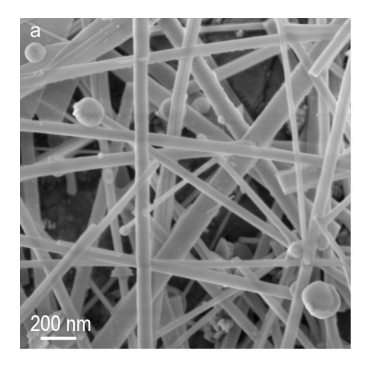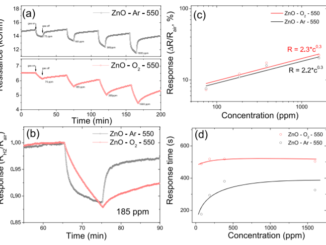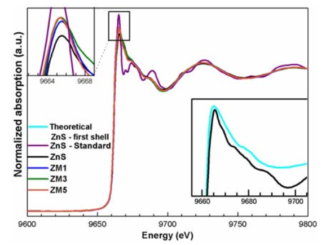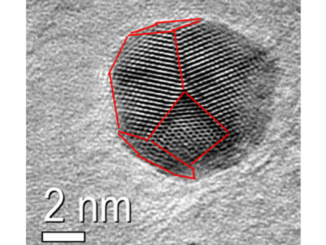
Comparative gas sensor response of SnO2, SnO and Sn3O4 nanobelts to NO2 and potential interferents
Abstract: The gas sensor performance of single crystalline tin oxide nanobelts in different oxidation states (SnO2, SnO and Sn3O4), synthesized by a carbothermal reduction method, is reported. The synthesized materials were characterized by X-ray diffraction, electron microscopy and nitrogen adsorption/desorption experiments. Gas sensor measurements showed that the sensor based on Sn3O4 nanobelts exhibits the highest sensor response to 50 ppm NO2 at 200 degrees C with an approximately 155-fold increase in electrical resistance. Moreover, at this operating temperature, Sn3O4 nanobelts were found to display the highest selectivity to NO2 relative to CO while SnO nanobelts exhibited the highest selectivity to NO2 relative to H-2 and CH4. These results show that tin oxide semiconducting nanomaterials, with the unusual oxidation states of SnO and Sn3O4, show great promise as alternatives to SnO2 for use in high performance gas sensor devices. (C) 2014 Elsevier B. V. All rights reserved.
Author(s): Suman, PH; Felix, AA; Tuller, HL; Varela, JA; Orlandi, MO
SENSORS AND ACTUATORS B-CHEMICAL
Volume: 208 Pages: 122-127 Published: MAR 1 2015
PDF: Comparative gas sensor response of SnO2, SnO and Sn3O4 nanobelts to NO2 and potential interferents
DOI: 10.1016/j.snb.2014.10.119




